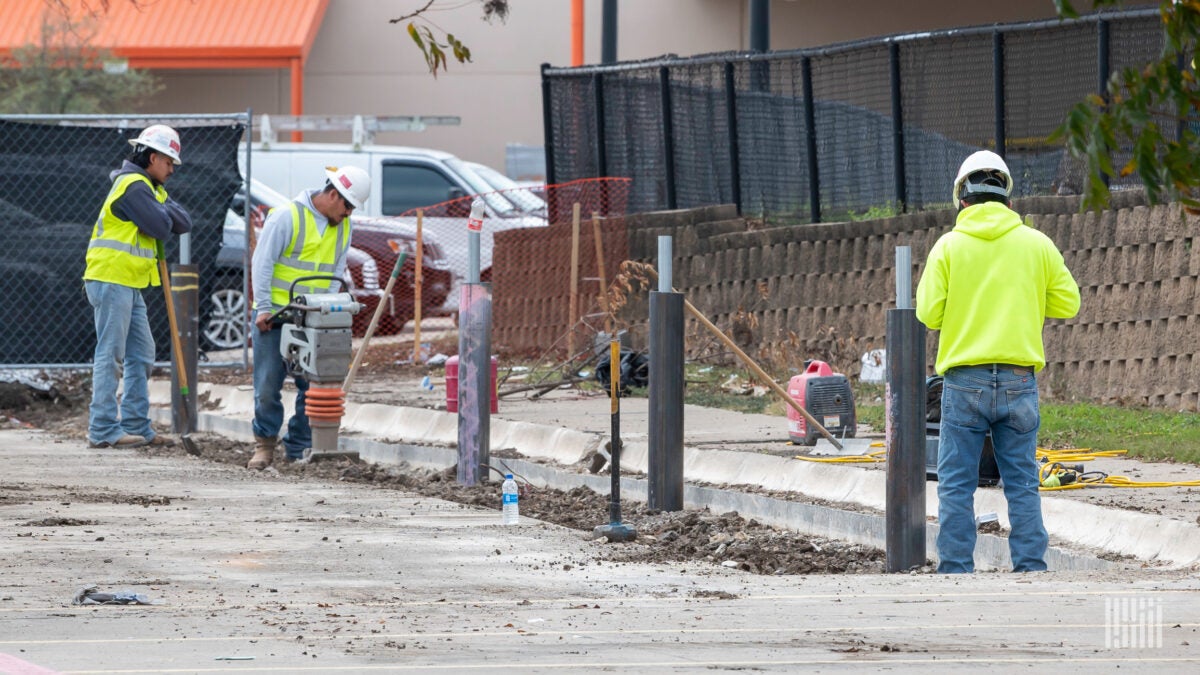The 5th Circuit Court of Appeals (which oversees Texas, Mississippi, and Louisiana) recently affirmed a $35,000 fine against an employer whose foreman allowed his crew member to work while a violation continued, despite explicit instructions by a company manager to fix an Occupational Safety and Health Administration (OSHA) rules violation.
Background
An employer’s construction crew was installing a concrete drainage pipe alongside a road. For the first two days of the project, the crew had adequate protection from cave-ins. But beginning on day three, the work would be too close to the street to continue with the safety measure the company had been using. The company’s safety manager told the foreman on the job that the crew would need to start using a trench box, which is placed in the ditch and has walls that guard against cave-ins.
The supervisor did not follow the instructions. The very next day, a crew member entered the excavation despite the lack of a trench box. The supervisor admitted that he allowed the crew member to enter the excavation without a trench box. He further admitted that he did not follow the instructions because the crew member would only be in there for a short time, and it would take more work than necessary to complete the job. An OSHA compliance officer happened to visit the worksite while the crew member was working in the trench without adequate protection. The inspector issued the employer a citation for the violation.
The employer appealed the decision to an Administrative Law Judge, and then to the Occupational Safety & Health Review Commission. Both upheld the fine. The employer then appealed those decisions to the federal 5th Circuit Court of Appeals arguing that the foreman’s authorization of the violation — and disregard of his manager — was “unpreventable employee misconduct” and that the violation was not “willful” because of the manager’s instruction to comply.
Court of Appeals’ decision
Under the Occupational Safety and Health Act, to establish a safety violation, it must be shown that the employer had actual or constructive knowledge of the unsafe conditions with reasonable due diligence, among other things. As the 5th Circuit noted, because a corporation may only act through its agents, “it is usually liable for acts of its supervisors in the performance of their assigned duties.” An exception to this principle applies when the supervisor’s own conduct is the OSHA violation. The 5th Circuit found that the exception did not apply here, however, as the violation was the crew member working in the trench without adequate protection. Although the supervisor allowed the violation to happen, the 5th Circuit stated that “authorizing another’s violation is not the same as committing the violation oneself.” The 5th Circuit also rejected the employer’s argument “that a supervisor’s knowledge cannot be imputed to the employer when the supervisor authorizes, or takes some other active role in, a subordinate’s safety violation.”
The employer also argued the unpreventable employee misconduct defense. This defense provides that even if OSHA can make a case of unlawful conduct, an employer is not liable if it can show that the violation resulted from unpreventable employee misconduct. This defense only works when an employer can prove that it has and enforces proper safety rules. Here, while the employer had safety rules, the 5th Circuit found fault with the employer’s enforcement of those rules and ultimately rejected the unpreventable employee misconduct defense. The 5th Circuit came to this conclusion by noting that the record showed that the employer never disciplined the crew member who was exposed to the hazard; and while the company had four OSHA rules violations in the past five years, and had conducted over 1,000 projects, it had only recorded two disciplinary actions for violations. The 5th Circuit found this to show that at least two violations went unpunished, and the small number of disciplinary measures taken suggested that the employer did not enforce its safety rules, in light of the large number of projects.
Takeaway
This decision should serve as a notice to all employers that OSHA violations, even when wrongfully and willfully encouraged by a supervisor, can still result in liability to the employer. Employers should ensure that they have proper written safety rules and procedures in effect. Additionally, employers should make sure that all managers and agents of the company are properly trained on these rules and their enforcement. Lastly, employers must make certain that these rules are fully and properly enforced and that failures to abide by the rules are met with appropriate action and discipline as warranted.
R. Eddie Wayland is a partner with the law firm of King & Ballow. You may reach Mr. Wayland at (615) 726-5430 or at [email protected]. The foregoing materials, discussion and comments have been abridged from laws, court decisions, and administrative rulings and should not be construed as legal advice on specific situations or subjects.










